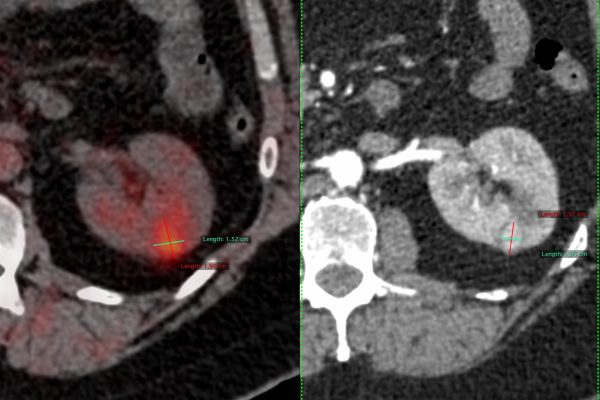Essential Safety Tips for Patients Opting for Portable X-rays at Home
In today’s rapidly advancing healthcare landscape, technology has made significant strides in enhancing patient care and accessibility. One such innovation is the availability of portable X-ray machines that bring diagnostic imaging to the comfort of patients’ homes. While this convenience offers numerous benefits, it’s crucial for patients to prioritize safety when utilizing these devices. In this article, we’ll explore the importance of safety measures for patients choosing portable X-rays at home and provide actionable tips to ensure their well-being.
Understanding Portable X-Rays:
Portable X-ray machines are compact imaging devices designed to provide diagnostic imaging outside traditional medical settings, such as hospitals or clinics. These devices offer a convenient solution for patients with mobility issues or those requiring frequent imaging. However, unlike stationary X-ray machines, portable units necessitate additional precautions to guarantee safety and accuracy.
Safety First: Why It Matters
While portable X-rays offer unparalleled convenience, safety should always remain a top priority. Mishandling or improper use of these devices can pose risks to both patients and operators. Therefore, adhering to safety guidelines is essential to minimize potential hazards and ensure accurate diagnostic outcomes.
In recent years, the healthcare landscape has witnessed a notable shift towards convenience and accessibility. One significant development in this realm is the availability of portable X-ray services for patients in the comfort of their homes. While this advancement offers undeniable benefits, ensuring safety remains paramount. In this guide, we’ll explore essential safety tips for patients opting for portable X-rays at home.
Safety Tip #1: Choose Reputable Providers:
Before scheduling a portable X-ray service, research and select reputable providers with a track record of adherence to safety protocols and quality standards. Verify the credentials and certifications of the provider, ensuring they comply with regulatory requirements. A reliable provider will prioritize patient safety and employ trained professionals proficient in operating portable X-ray equipment.
Safety Tip #2: Confirm Equipment Calibration:
Ensure that the portable X-ray equipment undergoes regular calibration and maintenance to guarantee accurate imaging results. Misaligned or malfunctioning equipment can lead to erroneous diagnoses or unnecessary radiation exposure. Request information from the provider regarding equipment calibration procedures and frequency to mitigate potential risks.
Safety Tip #3: Prepare the Environment:
Prepare a suitable environment within your home for the X-ray procedure. Clear the designated area of any clutter or obstacles to facilitate the setup of the portable X-ray machine. Ensure adequate space for positioning the equipment and accommodating the imaging process comfortably. Additionally, consider factors such as lighting and ventilation to enhance the overall experience.
Safety Tip #4: Shielding and Positioning:
During the X-ray procedure, prioritize shielding and proper positioning to minimize radiation exposure and optimize image quality. Patients should wear appropriate shielding devices, such as lead aprons, to protect sensitive areas from radiation. Additionally, collaborate closely with the radiologic technologist to achieve optimal positioning for accurate imaging while minimizing radiation exposure to non-targeted areas.
Safety Tip #5: Limit Exposure Time:
Limit exposure time to radiation by following the instructions provided by the radiologic technologist. Minimize unnecessary movement or repositioning during the imaging process to expedite the procedure and reduce cumulative radiation dose. Communicate any concerns or discomfort to the technologist promptly to ensure a safe and efficient experience.
Safety Tip #6: Follow Post-Procedural Guidelines:
After the X-ray procedure, adhere to any post-procedural guidelines provided by the healthcare provider. This may include recommendations for rest, hydration, or medication, depending on the nature of the imaging study. Report any adverse reactions or unusual symptoms to your healthcare provider promptly for further evaluation and management.
Safety Tip #7: Maintain Communication:
Maintain open communication with the healthcare provider and radiologic technologist throughout the entire process. Voice any questions, concerns, or preferences regarding the X-ray procedure to ensure personalized care and optimal safety. A collaborative approach fosters trust and ensures that patient needs are addressed effectively.
Safety Tip #8: Review Imaging Results:
Upon completion of the X-ray procedure, review the imaging results with your healthcare provider to facilitate timely diagnosis and treatment planning. Discuss any findings or abnormalities detected during the imaging study, and seek clarification on any aspects of the report that require further explanation. Active involvement in the interpretation of imaging results promotes informed decision-making and patient empowerment.
Conclusion:
Portable X-ray services offer a convenient alternative for patients requiring diagnostic imaging in the comfort of their homes. By adhering to essential safety tips and collaborating with reputable providers, patients can mitigate risks and ensure a safe and effective experience. Prioritize communication, follow procedural guidelines, and advocate for your well-being throughout the entire process. With careful attention to safety measures, portable X-rays can contribute to improved healthcare delivery and patient outcomes.

